How to Master Color and Light in Painting
Mastering color and light is essential for any artist looking to elevate their paintings from mere representations to breathtaking works of art. Imagine standing in front of a canvas, brush in hand, ready to bring your vision to life. The way you manipulate color and light can transform a simple scene into a mesmerizing experience that captivates viewers. It's not just about slapping on paint; it's about understanding the intricate dance between hues and illumination. This article dives deep into the essential techniques and concepts that will help you harness the power of color and light, regardless of your skill level.
Color theory is the bedrock of painting, akin to the grammar of a language. It involves the color wheel, which serves as a visual guide to understanding primary, secondary, and tertiary colors. Primary colors—red, blue, and yellow—are the building blocks from which all other colors are created. Secondary colors, like green, orange, and purple, emerge from mixing these primaries. Tertiary colors, formed by blending primary and secondary colors, add further nuance to your palette. Additionally, complementary colors (those opposite each other on the color wheel) can create striking contrasts, while analogous colors (those next to each other) foster harmony. Understanding these relationships can enhance your artistic expression and make your work more compelling.
Light is the unsung hero of painting; it shapes our perception of color and creates depth and dimension. Think of light as the artist's secret weapon. It can evoke emotions, set a mood, and guide the viewer's eye throughout the composition. Whether you're painting a sunlit landscape or a dimly lit still life, understanding how natural and artificial light sources affect your work is crucial. The right lighting can transform a flat image into a vibrant, three-dimensional experience.
Different types of lighting—ambient, directional, and diffused—each offer unique challenges and opportunities for artists. Ambient light provides a soft, overall illumination that can create a gentle atmosphere. Directional light, on the other hand, casts shadows and highlights, adding drama to your piece. Diffused light softens shadows and reduces contrast, making it easier to blend colors. Understanding these types of lighting can help you choose the right approach for your painting, allowing you to convey the desired mood effectively.
Natural light is ever-changing, influenced by the time of day and weather conditions. This variability can create stunning effects, but it also requires artists to be adaptable. For instance, the golden hour—just before sunset—offers a warm, soft light that enhances colors beautifully. In contrast, artificial light provides consistency, making it easier to work at any time. However, it can alter color perception, so artists must adjust their techniques accordingly. Mastering the interplay between these light sources can elevate your work to new heights.
Shadows and highlights are the backbone of realism in painting. They add depth and visual interest, drawing the viewer into the scene. Think of shadows as the whisper of mystery and highlights as the shout of clarity. Learning how to create these elements effectively is essential for any artist. Use a variety of techniques, such as glazing and layering, to build up shadows and highlights gradually. This approach not only enhances realism but also adds a sense of richness to your artwork.
Mastering color mixing is crucial for achieving the desired hues and tones in your paintings. Techniques like glazing—applying transparent layers of color over dried paint—can create depth and luminosity. Layering allows you to build complex colors that are rich and vibrant. Experiment with different methods to discover what works best for you and your style. The journey of color mixing is like cooking; the right ingredients and techniques can lead to a masterpiece.
Implementing practical techniques can significantly improve your ability to work with color and light. One effective method is using a limited palette. This approach encourages cohesion and harmony, simplifying your color choices while allowing you to focus on the interplay of light and shadow. Another tip is to develop strong observational skills. By closely studying how light interacts with colors in real life, you can capture these effects more authentically in your artwork.
A limited palette can be your best friend as an artist. It forces you to make thoughtful decisions about color and encourages you to explore the nuances within a smaller selection. This not only simplifies the painting process but also fosters a sense of unity in your work. Think of it as a chef working with a few key ingredients to create a dish that is both simple and delicious.
Developing strong observational skills is vital for any artist. The world around you is a treasure trove of inspiration, and being able to accurately capture the effects of light and color is what sets great artists apart. Spend time studying your surroundings; notice how light changes throughout the day and how it affects the colors of objects. This practice will lead to more authentic and compelling artwork, making your paintings resonate with viewers.
- What is color theory? Color theory is a framework that helps artists understand how colors interact and can be combined to create visually appealing works.
- How does light affect painting? Light influences how colors are perceived and creates depth and dimension, making it crucial for effective representation in artwork.
- What are the different types of lighting? The main types of lighting include ambient, directional, and diffused light, each offering unique effects and challenges.
- Why is a limited palette beneficial? A limited palette promotes cohesion and harmony in a painting, simplifying color choices and enhancing the interplay of light and shadow.
- How can I improve my observational skills? Spend time studying your surroundings, paying attention to how light interacts with colors and shapes to enhance your painting accuracy.

Understanding Color Theory
Color theory is not just a set of rules; it’s the very foundation of painting that unlocks the door to artistic expression. Imagine stepping into a world where every hue has a personality, and every shade tells a story. At its core, color theory revolves around the color wheel, which categorizes colors into primary, secondary, and tertiary groups. The primary colors—red, blue, and yellow—are the building blocks of all other colors. By mixing these, you create secondary colors like green, orange, and purple. Tertiary colors emerge from mixing a primary color with a secondary one, leading to a wide spectrum of hues.
Understanding complementary and analogous color schemes is essential for artists looking to enhance their work. Complementary colors, which sit opposite each other on the color wheel, create a vibrant contrast that can make your painting pop. For instance, pairing blue with orange can create a striking visual impact that draws the viewer's eye. On the other hand, analogous colors, which are next to each other on the wheel—like blue, blue-green, and green—offer a more harmonious and soothing effect. This knowledge allows artists to evoke specific emotions and set the mood of their artwork.
But wait, there’s more! Color theory also dives into the concept of temperature. Colors can be categorized as warm (reds, oranges, yellows) or cool (blues, greens, purples). Warm colors tend to evoke feelings of warmth and energy, often making a space feel more inviting. Cool colors, however, can create a sense of calm or tranquility. Understanding how to manipulate color temperature can significantly enhance the emotional depth of your paintings.
Moreover, let’s not forget about color harmony, which is crucial for creating a balanced composition. Color harmony refers to the pleasing arrangement of colors that work well together. Artists can achieve harmony through various methods, such as using a monochromatic palette, which involves different shades and tints of a single color, or employing the triadic scheme, which uses three colors evenly spaced around the color wheel. This not only makes the artwork more visually appealing but also maintains a sense of unity throughout the piece.
In summary, mastering color theory is like learning the language of art. It allows artists to communicate emotions, set the mood, and create visual interest. By understanding the relationships between colors and how to manipulate them, you can transform your paintings into captivating stories that resonate with your audience. So, the next time you pick up your brush, remember: color is not just a visual element; it’s a powerful tool that can bring your artistic vision to life!
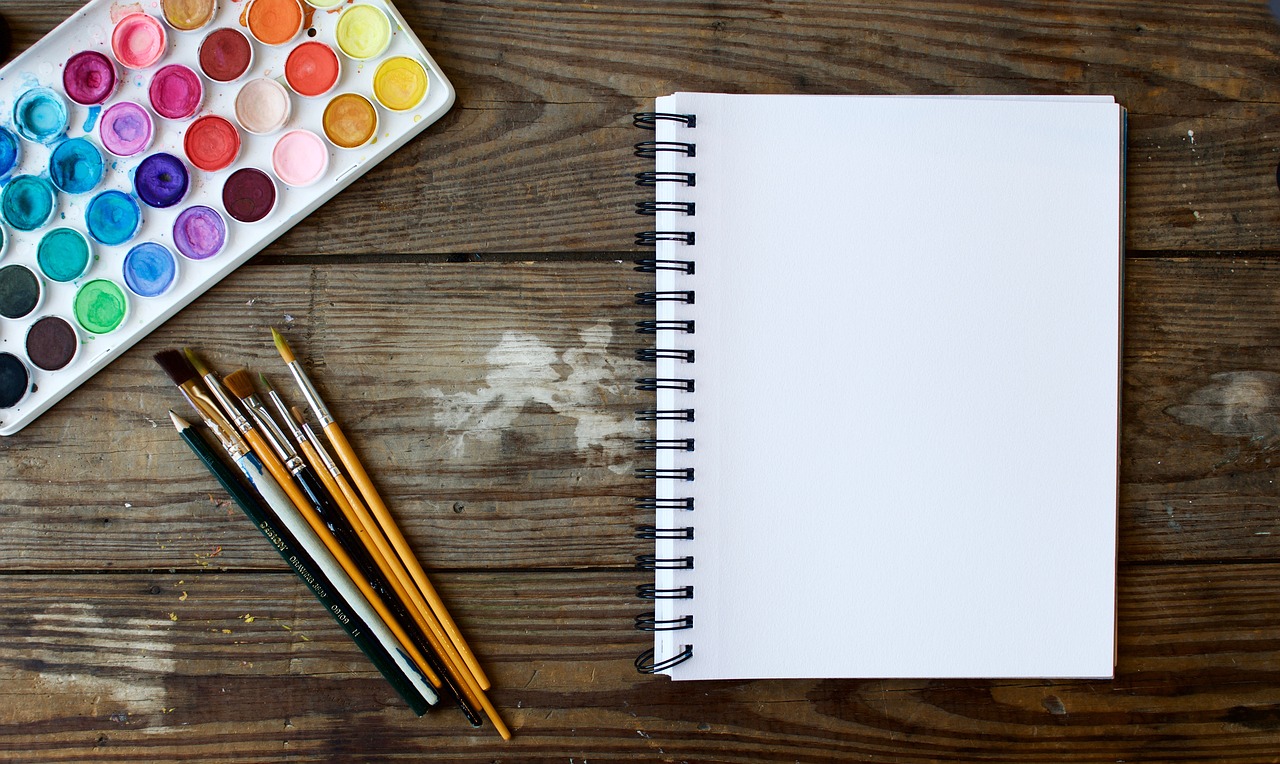
The Role of Light in Art
Light plays an absolutely crucial role in the world of art, serving as the invisible brush that shapes our perception of color, form, and space. When you think about it, without light, we wouldn't be able to see the beautiful hues of a sunset or the intricate details of a painting. It’s fascinating how light influences the way we interpret art; it can evoke emotions, create depth, and guide our eyes to focal points within a composition. Just like a magician uses tricks to captivate an audience, artists utilize light to enchant viewers, making them feel a connection to the artwork.
Understanding how light interacts with colors is essential for any artist looking to elevate their work. For instance, consider how a vibrant red apple appears under a bright midday sun compared to the soft glow of a candlelight dinner. The same object can exhibit vastly different qualities based on the lighting conditions. This is why artists must pay close attention to their light sources, as they can dramatically alter the mood and tone of a piece.
There are various types of lighting that can be employed in painting, each offering unique challenges and opportunities. Here’s a brief overview of some common types:
- Ambient Light: This is the natural light that fills a space, providing a soft and even illumination. It’s the light that surrounds us and sets the overall tone of the scene.
- Directional Light: This type of light creates strong contrasts and shadows, emphasizing textures and forms. Think of sunlight streaming through a window; it highlights certain areas while leaving others in shadow.
- Diffused Light: Soft and scattered light minimizes harsh shadows and creates a gentle atmosphere. It’s often found on overcast days, making colors appear more muted and harmonious.
Each of these lighting types can significantly impact how colors are perceived and how a painting is interpreted. An artist’s choice of lighting can be likened to a director’s choice of camera angles in a film; it shapes the narrative and guides the audience’s experience.
Natural light is ever-changing, shifting throughout the day and affecting the way colors and shadows are seen. Morning light has a golden warmth, while the afternoon sun casts a bright, almost harsh quality. On the other hand, artificial light offers a level of consistency that can be beneficial for artists, especially when working indoors. However, it’s important to note that artificial light can also distort colors, making certain hues appear differently than they would in natural sunlight.
Shadows and highlights are the backbone of realism in painting. They add depth and dimension, breathing life into flat surfaces. Mastering the art of creating shadows involves understanding the direction and quality of light. For example, a soft shadow indicates a diffused light source, while a sharp shadow suggests a more direct light. Highlights, on the other hand, draw the viewer's attention to specific areas, creating a sense of focus and drama. Think of highlights as the sparkle in an eye or the sheen on a polished surface; they can make all the difference in the overall composition.
In conclusion, light is not merely a tool for visibility; it is a fundamental element that shapes the very essence of art. By mastering the interplay between light and color, artists can create works that resonate with viewers on a deeper level, transforming simple pigments into vibrant stories waiting to be told.
- How does light affect color perception in painting?
Light can change the way colors look, making them appear brighter or duller depending on the source and quality of light. Understanding this is key to creating realistic artwork.
- What is the importance of shadows in painting?
Shadows add depth and dimension, helping to create a three-dimensional feel in a two-dimensional medium. They guide the viewer's eye and enhance the overall composition.
- Should I always paint in natural light?
While natural light is ideal for capturing true colors, it can be inconsistent. Many artists find a balance by using both natural and artificial light depending on their needs.
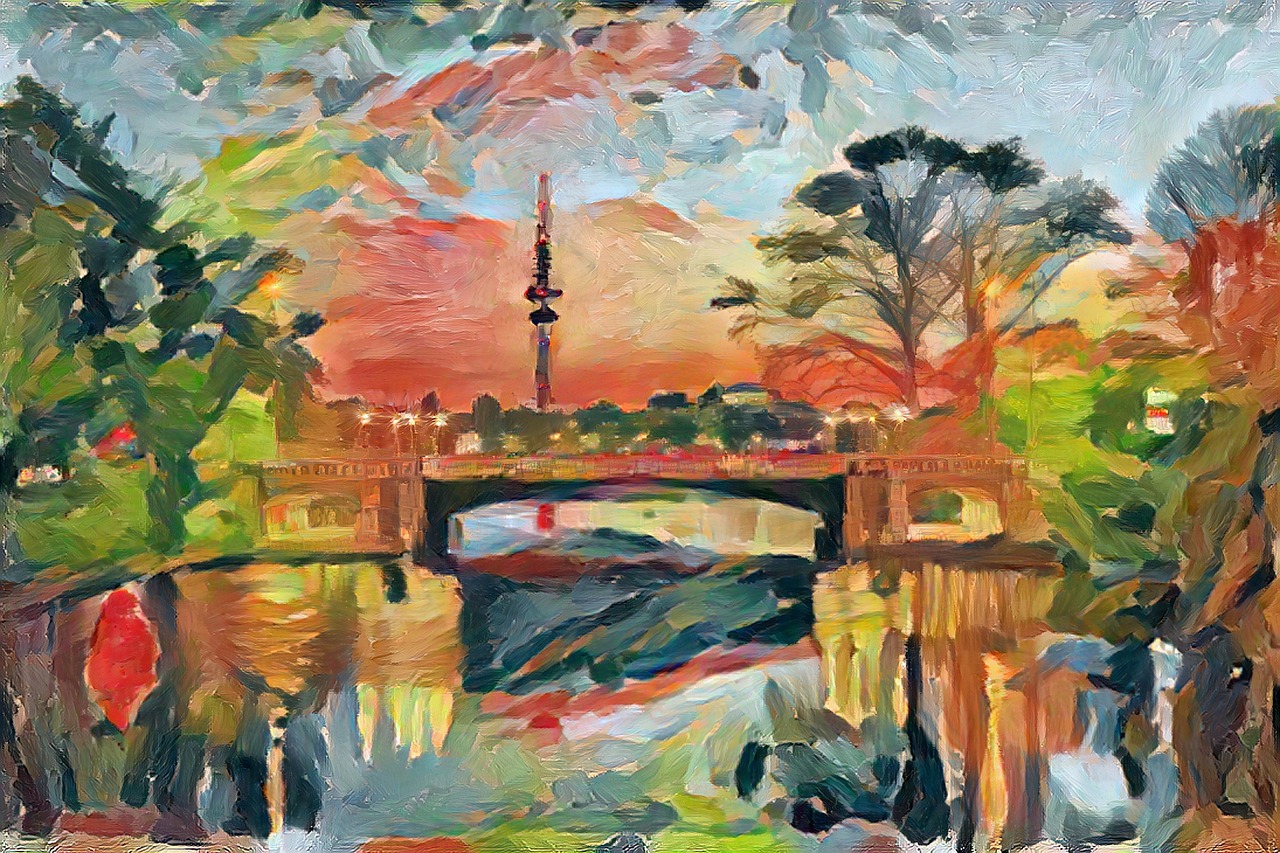
Types of Lighting
When it comes to painting, the type of lighting you choose can dramatically alter the mood and feel of your artwork. Think of lighting as the stage director of your painting; it sets the scene and guides the viewer's emotions. There are several types of lighting to consider, each with its unique characteristics and effects.
Ambient light is the soft, diffused light that fills a space. It’s like the gentle glow that comes from a cloudy day, creating a balanced atmosphere without harsh shadows. This type of lighting is fantastic for establishing a base layer in your artwork, allowing colors to appear more natural and soft. It’s especially useful for landscapes or scenes where you want to evoke a sense of calm.
On the other hand, directional light adds drama and depth. Imagine the sun breaking through the clouds, casting sharp shadows and highlighting certain areas of your painting. This type of lighting can create a sense of movement and energy, drawing the viewer’s eye to specific focal points. It’s perfect for portraits or still life where you want to emphasize texture and form.
Then we have diffused light, which softens shadows and creates a more even illumination. This is often achieved using materials that scatter light, such as sheer curtains or through cloudy skies. Diffused light is great for capturing the subtleties of color and can help prevent harsh contrasts that might overwhelm the viewer.
To help you visualize these types of lighting, here’s a simple table that summarizes their characteristics:
| Type of Lighting | Characteristics | Best Used For |
|---|---|---|
| Ambient Light | Soft, diffused, balanced | Landscapes, calm scenes |
| Directional Light | Sharp shadows, highlights, dramatic | Portraits, dynamic compositions |
| Diffused Light | Even illumination, soft shadows | Capturing subtleties of color |
Each type of lighting presents its own set of challenges and opportunities for artists. By understanding how to manipulate these lighting effects, you can enhance your paintings and convey a more compelling story. So, next time you're setting up your canvas, take a moment to consider what type of lighting will best serve your artistic vision. The right light can transform your work from ordinary to extraordinary!
- What is the best lighting for painting indoors? Natural light is often preferred as it provides a true representation of colors, but soft artificial lights can also work well.
- How can I create depth in my paintings using light? Utilize directional lighting to create strong contrasts between light and shadow, enhancing the three-dimensionality of your subjects.
- Is it important to consider the time of day when painting? Absolutely! The angle and quality of natural light change throughout the day, impacting how colors and shadows appear.

Natural vs. Artificial Light
When it comes to painting, understanding the difference between natural and artificial light is crucial for any artist aiming to create compelling artwork. Natural light, which comes from the sun, changes throughout the day, casting different hues and shadows that can dramatically alter the appearance of colors on your canvas. This dynamic quality of natural light can evoke various moods and feelings, making it an essential element for creating depth and realism in your paintings. For instance, the soft, warm light during the golden hour can give your work a magical quality, while the stark midday sun might create harsh contrasts that challenge your skills.
On the other hand, artificial light provides a more consistent and controlled lighting environment. Whether you’re using incandescent bulbs, fluorescent lights, or LED fixtures, these light sources can help maintain a steady illumination that allows you to focus on your technique without worrying about the color shifts that occur with natural light. However, it’s important to note that artificial lighting can sometimes distort colors, making them appear different than they would in natural sunlight. This discrepancy can lead to unexpected surprises when viewing your work in a gallery or under different lighting conditions.
To help you understand the effects of both types of lighting, consider the following table that outlines their key differences:
| Feature | Natural Light | Artificial Light |
|---|---|---|
| Source | Sunlight | Light bulbs, LEDs, etc. |
| Variability | Changes throughout the day | Consistent, but can vary by type |
| Color Temperature | Warmer during sunrise/sunset, cooler at noon | Varies by bulb type (e.g., warm white, cool white) |
| Shadows | Soft, changing shadows | Can create harsh, defined shadows |
When working in natural light, it's beneficial to pay attention to the time of day and the weather conditions, as both can significantly influence your painting. You might find that overcast days provide a soft, diffused light that is perfect for capturing subtle colors, while sunny days can create vibrant contrasts that demand bold brushwork.
Conversely, when using artificial light, consider the type of bulbs you are using and how they impact your color perception. For instance, using daylight-balanced bulbs can help mimic natural light, allowing you to achieve more accurate color representation. Additionally, you can experiment with different light placements to see how they affect the mood and tone of your artwork.
Ultimately, both natural and artificial light have their unique benefits and challenges, and mastering their effects can elevate your painting skills to new heights. Embrace the surprises they bring and use them to enhance your artistic expression!

Creating Shadows and Highlights
Creating shadows and highlights is an essential skill for any painter looking to add realism and depth to their artwork. Think of shadows as the dark whispers of a painting, while highlights are its bright shouts. Together, they create a dialogue that can evoke emotion and draw the viewer in. When you master the interplay of light and dark, your paintings will not only look more lifelike but will also possess a certain magical quality that captivates the audience.
To begin, it's crucial to understand the direction and intensity of your light source. Is it coming from above, below, or the side? Each angle will cast shadows differently and illuminate various parts of your subject. For example, a light source positioned directly above will create shadows that are more pronounced beneath objects, while a side light will create elongated shadows that can add drama and tension to your composition.
Next, consider the color of your shadows and highlights. It's a common misconception that shadows should always be painted in shades of black or gray. In reality, shadows can be rich and colorful, reflecting the hues of the surrounding environment. For instance, a shadow cast on a white wall may appear blue due to the reflection of the sky, while a shadow on a grassy field might take on a greenish tone. This concept is known as color temperature, and it plays a vital role in creating a believable scene.
When applying highlights, think of them as the sparkle that brings your painting to life. Highlights should be applied sparingly and strategically, as too much can overwhelm your composition. Use a lighter color than your base tone and consider the texture of the surface you are painting. For example, a shiny object like a glass vase will have sharper, more defined highlights compared to a matte surface like wood, which will reflect light more softly.
Here’s a simple technique to practice creating shadows and highlights:
- Choose a simple object to paint, like a sphere or a cube.
- Set up a light source (a lamp works great!) to one side of your object.
- Observe how the light interacts with the object, noting where the shadows fall and where the highlights appear.
- Sketch the object lightly on your canvas, marking the areas of shadow and highlight.
- Begin painting starting with the base color, then gradually build up shadows and highlights.
Finally, don't forget that practice makes perfect. The more you paint, the more intuitive this process will become. Experiment with different light sources and observe how they change the appearance of your subjects. Remember, every artist has their unique style, so feel free to adapt these techniques to fit your creative vision. Your journey in mastering shadows and highlights will not only enhance your technical skills but will also allow you to express your artistic voice in ways you never thought possible.
1. What materials do I need to effectively create shadows and highlights?
Most artists use a combination of brushes, paints, and a palette. A good set of brushes in various sizes will help you apply both shadows and highlights effectively. Additionally, having a limited palette can help you focus on the colors that best represent light and shadow.
2. How do I know which colors to use for shadows?
Shadows are often not just black or gray. Instead, consider the colors around the object. For example, if your object is sitting on a green surface, the shadow may have a greenish tint. Observing real-life shadows will give you a better understanding of color mixing.
3. Can I use digital tools to practice shadows and highlights?
Absolutely! Digital painting tools have become incredibly sophisticated. You can experiment with light and shadow using layers, which allows for easy adjustments without ruining your work.

Color Mixing Techniques
When it comes to painting, color mixing is like the secret sauce that can elevate your artwork from bland to breathtaking. Imagine standing in front of a blank canvas, armed with your brushes and paints, ready to create a masterpiece. But wait! How do you get that vibrant blue or that perfect shade of green? That's where mastering color mixing techniques comes into play. It's not just about slapping colors together; it's about understanding how they interact and transform when combined.
One of the most effective methods for mixing colors is the glazing technique. This involves applying a thin, transparent layer of color over a dry layer. Think of it like adding a filter to a photo; it can completely change the mood and tone of your painting. By layering colors this way, you can create depth and luminosity that is simply unattainable with a single application. For instance, if you want to achieve a rich, warm orange, start with a base of yellow and then glaze over it with a transparent red. The result? A glowing hue that seems to radiate off the canvas!
Another technique worth exploring is color layering. This method involves building up colors in layers to create complex shades and textures. Each layer adds depth and richness, allowing you to achieve a more dynamic look. Think of it like building a cake; each layer adds to the overall flavor and texture. For example, if you want to create a lush green landscape, you might start with a base of yellow-green, then layer on darker greens and even some blues to give it a sense of life and movement. The more you practice this, the more intuitive it will become.
Additionally, understanding the color wheel is crucial for effective mixing. The color wheel is a visual representation of colors arranged according to their chromatic relationship. By familiarizing yourself with the primary, secondary, and tertiary colors, you can easily identify which colors will complement each other and which will clash. For example, mixing complementary colors—those opposite each other on the wheel—can create stunning contrasts and vibrant shadows. If you mix red and green, you’ll get a muted brown, which can be perfect for creating shadows in your landscapes.
As you delve deeper into color mixing, don't forget about the importance of experimenting. Grab some scrap paper or an old canvas and start mixing. Trial and error is a vital part of the learning process. You might stumble upon a unique shade that becomes your signature color! Plus, the more you mix, the more you'll develop an intuitive understanding of how different colors work together.
In conclusion, mastering color mixing techniques is essential for any artist looking to enhance their work. By utilizing methods like glazing and layering, understanding the color wheel, and embracing experimentation, you can unlock a world of possibilities in your painting. So grab your palette, let your creativity flow, and watch as your colors blend into something truly magical!
- What is the best way to start mixing colors? Begin with a limited palette to simplify your choices and focus on the relationships between colors.
- How do I create a specific color? Use the color wheel to find complementary or analogous colors, and experiment with mixing primary colors to achieve your desired hue.
- Can I use any type of paint for glazing? Yes, but it's most effective with transparent paints like watercolors or acrylics designed for glazing.
- How can I improve my color mixing skills? Practice regularly, experiment with different techniques, and study the work of other artists to understand their color choices.
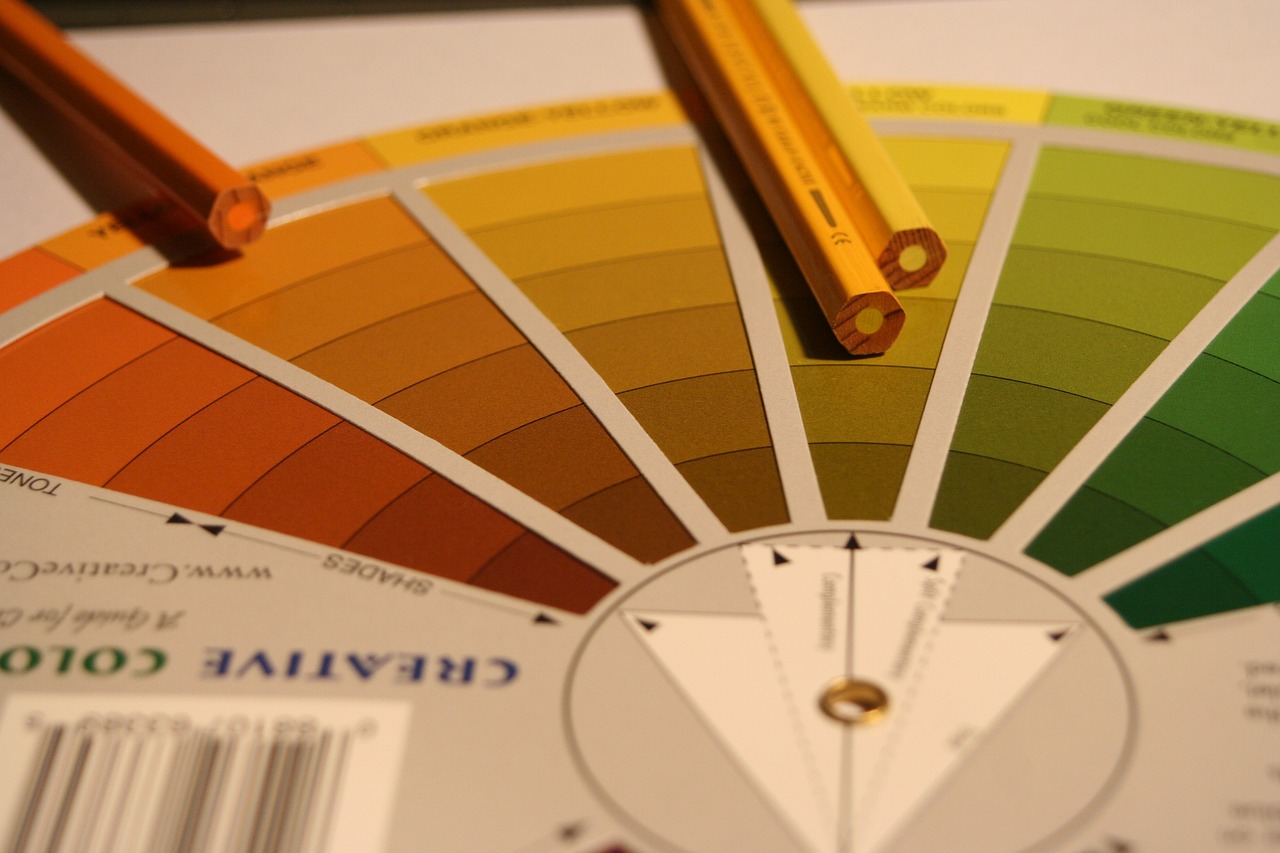
Practical Tips for Painting with Color and Light
When it comes to mastering color and light in painting, practical tips can be your secret weapon! Implementing effective techniques can dramatically elevate your artwork, making it not just visually appealing but also emotionally resonant. One of the first things to consider is the use of a limited palette. This approach not only simplifies your color choices but also fosters a sense of harmony and cohesion in your work. Think of it as a chef using a few key ingredients to create a delicious dish; sometimes, less truly is more.
Next, let’s talk about the importance of observational skills. To truly capture the essence of light and color, you need to train your eyes to see beyond the surface. Spend time studying your environment—notice how light interacts with different surfaces, how shadows dance, and how colors shift throughout the day. This practice will not only enhance your ability to paint but will also deepen your appreciation for the world around you. You might even find yourself inspired by the simplest of scenes!
Another effective technique is to study light in real-life scenarios. This means stepping outside, visiting museums, or even just sitting in your living room during different times of the day. Observe how natural light changes the appearance of colors and forms. Take notes or sketches to capture your observations. You could create a simple table to track your findings:
| Time of Day | Light Quality | Color Changes Observed |
|---|---|---|
| Morning | Soft and Warm | Cool colors appear more vibrant |
| Noon | Bright and Harsh | Shadows are sharp; colors can wash out |
| Evening | Golden and Warm | Warm tones dominate; shadows elongate |
Furthermore, consider experimenting with different lighting setups in your studio. By using various light sources—like lamps with different color temperatures or even colored gels—you can create unique effects that challenge your understanding of color and shadow. This experimentation can lead to delightful surprises in your artwork, much like a magician revealing a trick!
Lastly, don’t forget about the power of layering and glazing. These techniques allow you to build depth and richness in your colors. By applying thin layers of transparent paint, you can create a luminous effect that mimics how light interacts with objects in real life. It’s like adding a filter to a photograph; the result can be breathtaking!
In summary, mastering color and light in painting is a journey that requires practice, observation, and a willingness to experiment. By implementing these practical tips, you’ll not only improve your technical skills but also develop a deeper emotional connection to your artwork. Remember, every brushstroke is a step closer to creating something truly magnificent!
- What is a limited palette? A limited palette involves using a small selection of colors to create harmony in your painting.
- How can I improve my observational skills? Spend time observing your surroundings, noting how light and color change throughout the day.
- What techniques can I use to create depth in my paintings? Layering and glazing are effective techniques for adding depth and richness to your colors.
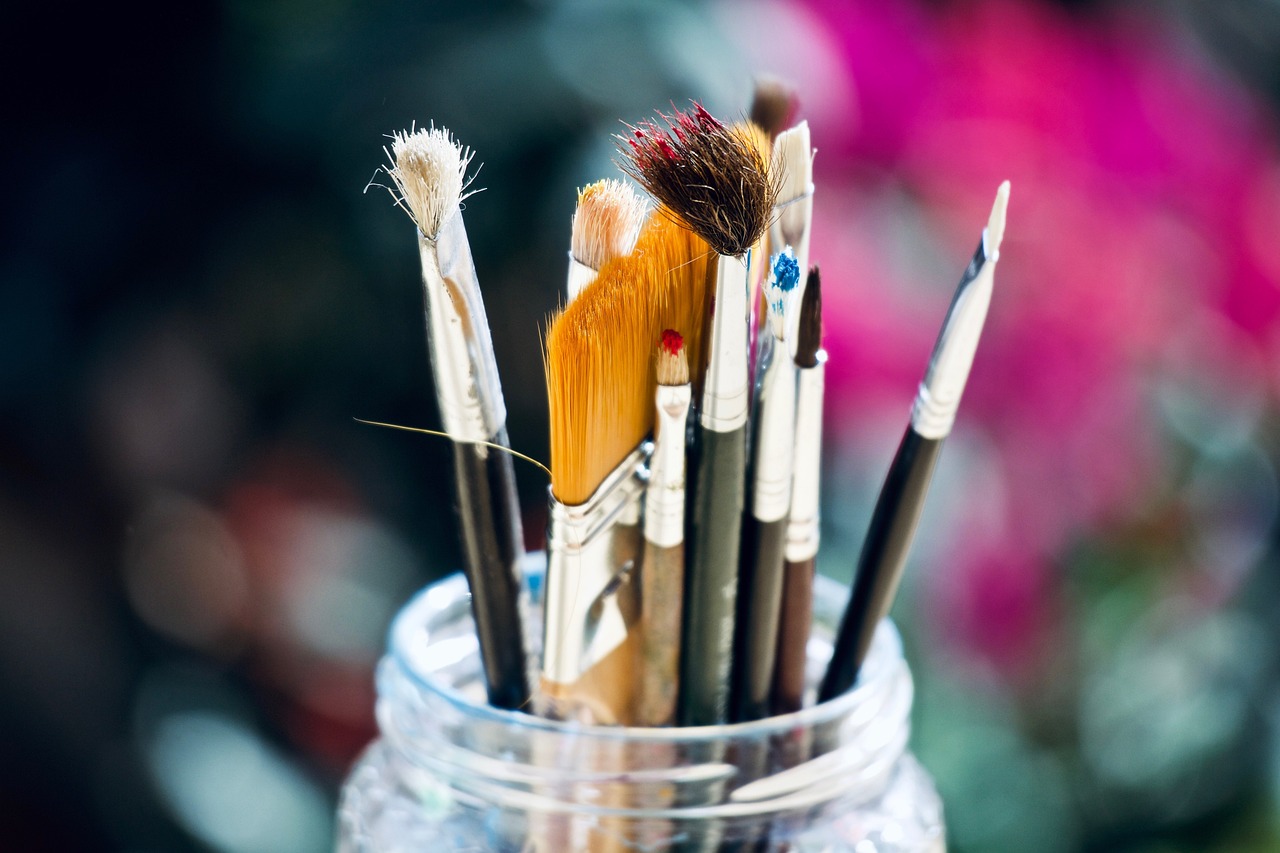
Using a Limited Palette
When it comes to painting, can be a game changer. Imagine trying to build a beautiful garden with just a handful of carefully selected flowers instead of a chaotic array of every bloom imaginable. This concept applies equally to art. By restricting your color choices, you not only create a sense of harmony but also foster a more profound understanding of how colors interact with one another. This technique encourages you to focus on the subtle variations of light and shadow, making your artwork more cohesive and visually appealing.
One of the most significant benefits of a limited palette is that it simplifies decision-making. Instead of feeling overwhelmed by the countless hues available, you can concentrate on the interplay of just a few colors. For instance, artists often choose a primary color scheme, incorporating just three primary colors—red, blue, and yellow. From these, you can mix a vast range of secondary colors, creating a vibrant yet harmonious composition. This approach not only makes the painting process less daunting but also enhances your ability to see the relationships between colors.
Moreover, using a limited palette can significantly impact the mood and tone of your artwork. For instance, if you opt for a palette dominated by warm colors like reds and yellows, your painting may evoke feelings of warmth and energy. Conversely, a cooler palette with blues and greens can create a sense of calm and tranquility. This emotional resonance is crucial in art, as it allows you to communicate more effectively with your audience.
To illustrate the effectiveness of a limited palette, consider the following table that outlines a simple yet versatile selection of colors:
| Color | Use |
|---|---|
| Cadmium Red | Warmth and vibrancy |
| Cobalt Blue | Cool tones and depth |
| Cadmium Yellow | Light and brightness |
| Burnt Umber | Shadows and earthiness |
| Titanium White | Mixing and highlights |
Incorporating these colors into your work can lead to stunning results, as they allow for a broad spectrum of mixing possibilities while maintaining a unified look. Furthermore, this approach encourages experimentation. As you mix and layer these colors, you’ll discover new shades and tones, enhancing your creative process.
Finally, a limited palette fosters a deeper connection with your subject matter. By focusing on fewer colors, you begin to notice the subtle shifts in hue and tone that often go unnoticed. This heightened awareness can lead to more authentic representations of your subjects, whether you’re painting a vibrant sunset or a still life. So, the next time you sit down to paint, consider limiting your palette; you might just find that less truly is more.
- What is a limited palette? A limited palette refers to the practice of using a small selection of colors in your painting, which helps create harmony and cohesiveness.
- How does a limited palette improve my painting? It simplifies color choices, enhances your understanding of color relationships, and allows for richer mixing possibilities.
- Can I use a limited palette for any painting style? Absolutely! A limited palette can be effective in various styles, from realism to abstract art.
- What colors should I include in my limited palette? Start with primary colors (red, blue, yellow), along with a neutral like burnt umber and a white for mixing highlights.
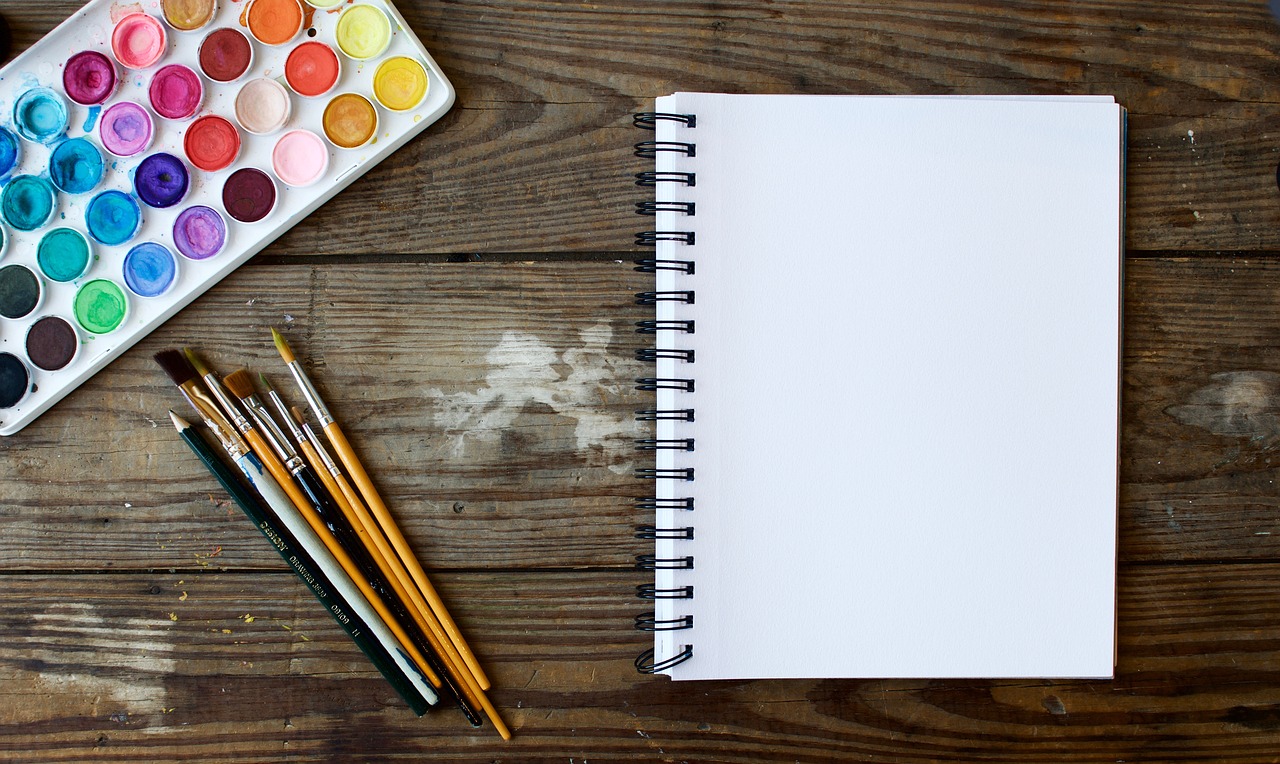
Observational Skills
Developing strong is like sharpening a painter's most essential tool. Imagine standing in front of a breathtaking landscape, the sun setting just right, casting a golden hue over the trees. It’s not just about seeing the colors; it’s about understanding how they interact with one another. When you train your eyes to notice the subtle shifts in light and shadow, you unlock the door to creating more authentic and compelling artwork. But how do you cultivate these skills?
First, it's important to remember that observation is more than just looking. It involves actively engaging with your surroundings. Try this exercise: take a moment to study a simple object, like an apple. What colors do you see? Is it merely red, or are there hints of yellow and green? What about the shadows? Are they soft and diffused, or sharp and defined? By dissecting what you see, you begin to appreciate the complexity of color and light.
Another effective way to enhance your observational skills is to practice sketching from life. Set up a still life arrangement with various objects and natural light. Spend time drawing the scene, focusing on the interplay of light and shadow. You’ll find that the more you sketch, the more you start to notice details you may have overlooked before. This practice not only improves your drawing skills but also trains your eye to recognize how light affects color.
Additionally, consider using a color wheel as a reference tool. It can help you visualize complementary colors and how they can create contrast in your paintings. For instance, if you’re painting a sunset, you might notice how the blue of the sky contrasts beautifully with the orange and pink hues of the clouds. By understanding these relationships, you can make more informed decisions about your color choices.
To further enhance your observational skills, you can also engage in mindful observation. This means taking the time to pause and really absorb what you see. Go outside and spend a few minutes just watching how the light changes as clouds move across the sky. Notice how the colors of the landscape shift with the changing light. This practice can deepen your understanding of how to replicate these effects in your paintings.
Finally, remember that observation is an ongoing journey. The more you practice, the better you’ll get. Consider keeping a visual journal where you jot down your observations about color and light. You can include sketches, color swatches, and notes about different lighting conditions. This journal will become an invaluable resource as you continue to grow as an artist.
In summary, honing your observational skills is crucial for any artist looking to master the use of color and light. By actively engaging with your environment, sketching from life, utilizing tools like the color wheel, practicing mindful observation, and keeping a visual journal, you’ll find that your ability to capture the essence of your subjects will improve dramatically. So, grab your sketchbook and start observing—your next masterpiece is waiting to be created!
- How can I improve my observational skills as an artist? - Practice sketching from life, engage in mindful observation, and keep a visual journal.
- What is the importance of color theory in painting? - Color theory helps artists understand how colors interact, enhancing their ability to create harmonious compositions.
- How does light affect color perception in painting? - Light influences how we see colors, creating depth and dimension in artwork, which is essential for realistic representation.
Frequently Asked Questions
- What is color theory and why is it important for painting?
Color theory is the backbone of painting, providing artists with a framework to understand how colors interact with one another. It helps in creating harmonious compositions and enables artists to evoke emotions through color choices. By mastering color theory, you can elevate your artwork, making it more visually appealing and impactful.
- How does light affect the perception of color in paintings?
Light plays a crucial role in how we perceive color. Different lighting conditions can change the way colors appear, altering their intensity and hue. For instance, natural light can bring out the vibrancy in colors, while artificial lighting might mute them. Understanding these effects allows artists to create depth and realism in their work.
- What are the different types of lighting I should consider when painting?
There are several types of lighting to consider, including ambient, directional, and diffused light. Ambient light provides a general illumination, while directional light casts distinct shadows and highlights, adding drama to your painting. Diffused light softens shadows and creates a more even tone. Each type offers unique challenges and opportunities to enhance your artwork.
- How can I effectively create shadows and highlights in my paintings?
Creating shadows and highlights is essential for adding realism and depth. To do this, observe how light interacts with objects in real life. Use darker colors for shadows and lighter tones for highlights, blending them smoothly to create a natural transition. Practice will help you master this technique, making your artwork more dynamic and engaging.
- What are some effective color mixing techniques for beginners?
Beginners can start with basic color mixing techniques like glazing and layering. Glazing involves applying thin transparent layers of color over one another, while layering adds depth by building up colors. Experimenting with these methods will help you achieve a wider range of hues and tones, enriching your paintings.
- Why is using a limited palette beneficial for my painting?
Using a limited palette can greatly enhance the cohesion and harmony of your artwork. It simplifies your color choices, allowing you to focus on the relationship between light and shadow. This approach often leads to more unified and aesthetically pleasing paintings, making your work stand out.
- How can I improve my observational skills as an artist?
Improving observational skills involves practicing regularly and studying your surroundings. Spend time sketching from life, paying attention to how light affects color and form. The more you observe, the better you'll become at capturing the nuances of light and color in your artwork, leading to more authentic and compelling pieces.



















